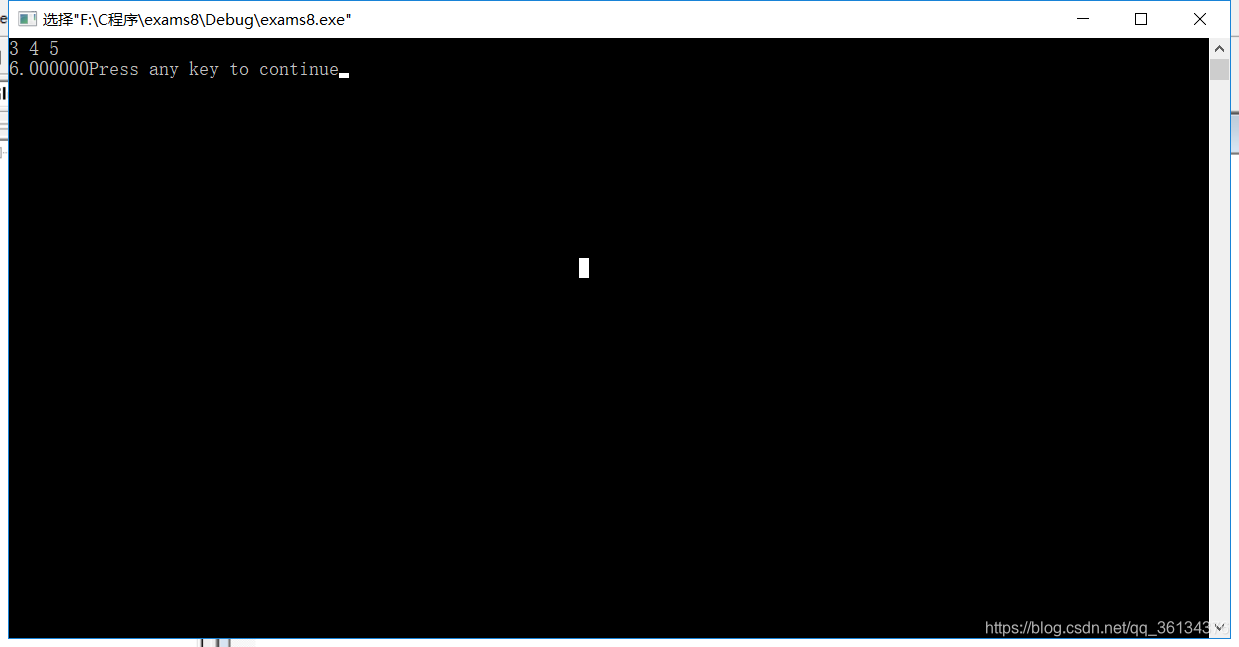C语言-求三角形面积
本文共 301 字,大约阅读时间需要 1 分钟。
一、代码
//三角形面积:(海伦公式)(p=(a+b+c)/2)//S=sqrt[p(p-a)(p-b)(p-c)]#include#include void main(){ double a,b,c; double p; double s; scanf("%lf%lf%lf",&a,&b,&c); if((a+b>c)&&(a+c>b)&&(b+c>a)){ p=(a+b+c)/2; s=sqrt(p*(p-a)*(p-b)*(p-c)); printf("%lf",s); } else printf("无法构成三角形"); }
二、结果

转载地址:http://xbch.baihongyu.com/
你可能感兴趣的文章
Node.js 实现类似于.php,.jsp的服务器页面技术,自动路由
查看>>
Node.js 异步模式浅析
查看>>
node.js 怎么新建一个站点端口
查看>>
Node.js 文件系统的各种用法和常见场景
查看>>
Node.js 模块系统的原理、使用方式和一些常见的应用场景
查看>>
Node.js 的事件循环(Event Loop)详解
查看>>
node.js 简易聊天室
查看>>
Node.js 线程你理解的可能是错的
查看>>
Node.js 调用微信公众号 API 添加自定义菜单报错的解决方法
查看>>
node.js 配置首页打开页面
查看>>
node.js+react写的一个登录注册 demo测试
查看>>
Node.js中环境变量process.env详解
查看>>
Node.js之async_hooks
查看>>
Node.js也分裂了-开源社区动态
查看>>
Node.js初体验
查看>>
Node.js升级工具n
查看>>
Node.js卸载超详细步骤(附图文讲解)
查看>>
Node.js卸载超详细步骤(附图文讲解)
查看>>
Node.js基于Express框架搭建一个简单的注册登录Web功能
查看>>
node.js学习之npm 入门 —8.《怎样创建,发布,升级你的npm,node模块》
查看>>